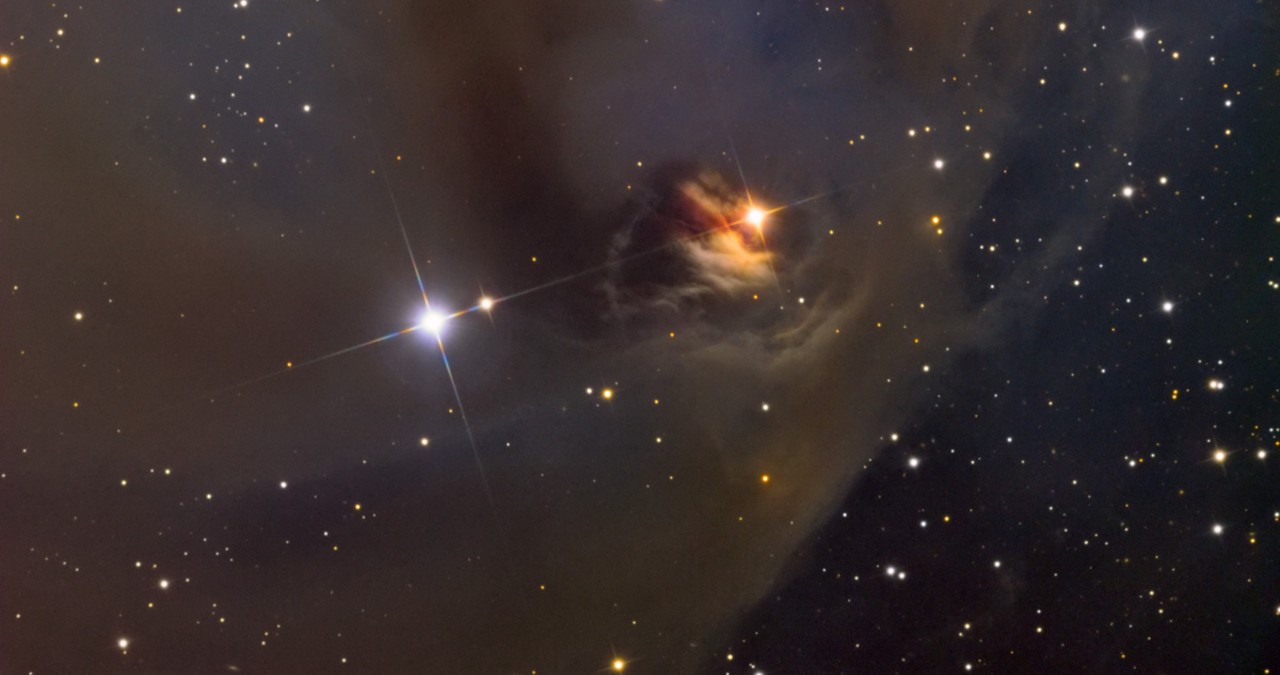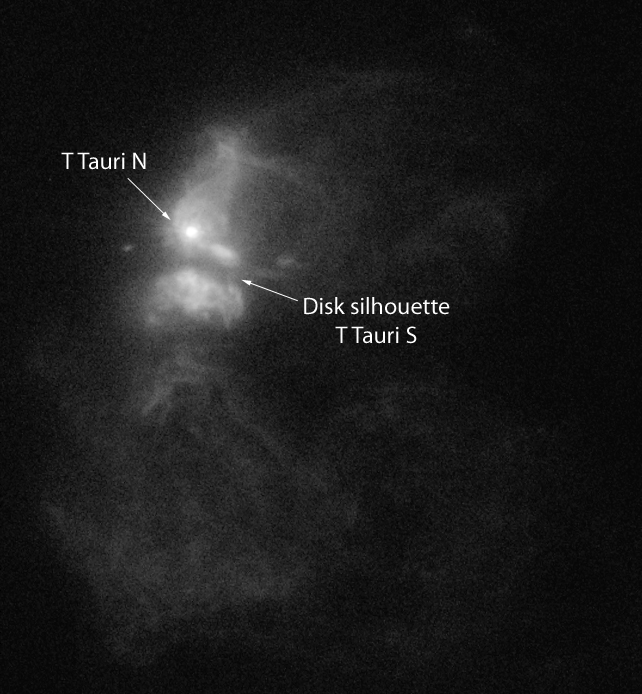One of the most notable baby stars in the galaxy, T Tauri, could be about to vanish from sight for decades as a thick, obscuring disk of gas and dust marauds in front of it.
T Tauri, which is located 471 light-years away in the constellation of Taurus, the Bull, is the namesake of an entire class of protostars that can fluctuate unpredictably in brightness. Astronomers denote variable stars by giving them a letter, and in this case T Tauri was the 20th variable star to be found in Taurus, while T being is 20th letter of the alphabet. Above 26, a variable star gets two letters. T Tauri is actually a triple star system, all three members of which are protostars that are still growing as they capture gas. As these stars grow, they contract, and it is the gravitational energy of this contraction that makes them shine — their cores are not yet hot enough to ignite nuclear fusion, which is how standard stars fuel their shine.
As the first recognized protostar of this class, T Tauri is already of great interest to astronomers — but now, it’s about to become even more interesting as it is about to embark on a “great dimming” that could last for up to a century.
In the T Tauri triple system, we can only see one of the stars, called T Tauri North, through an optical telescope. Its companions, known as T Tauri South A and B, make up a binary system that’s 100 astronomical units (9.3 billion miles/14.9 billion kilometers) away from the main star and orbit around T Tauri North once every 4,600 years. The binary is hidden at the center of a thick, dusty disk of gas. In fact, the dust in the disk is so impenetrable that T Tauri South A and B are only visible in infrared light, which can pass through the dust relatively unattenuated.
But now, the orbit of T Tauri South is bringing the disk in front of the visible star T Tauri North from our perspective, and astronomers are beginning to see the result of this.
Amateur astronomers, as part of the American Association of Variable Star Observers (AAVSO), have been tracking the brightness variations of the visible star in the T Tauri triplet for decades. For most of that time, the brightness has hovered around magnitude 10.2 with only minor variations of about half a magnitude resulting from bursts of accretion onto the star and volatile jets flowing away from the star. (In stellar magnitudes, the higher the number, the fainter the star — magnitude 1 is much brighter than magnitude 10, for example. The faintest star that can be seen with the naked eye in the night sky, from a very dark site, is about magnitude 6.)
“In about 2016 there was a sharp dimming [down to magnitude 11], and then again in 2022–2023 T Tauri North dimmed by about 2 magnitudes [to fainter than magnitude 12], and that hasn’t been seen in over a century,” said Tracy Beck of the Space Telescope Science Institute (STScI) in a press conference at the 245th meeting of the American Astronomical Society in Maryland.
Given that T Tauri South’s proper motion — that is, the speed with which the binary is moving in the sky — is 100 milliarcseconds per decade (a milliarcsecond is 0.001 arcseconds, and an arcsecond is 1/3,600th of a degree), coupled with T Tauri North’s own apparent motion, “the dimming events will last for about 100 years,” said Beck, with the level of obscuration reaching even more dramatic levels than it already has.
Consider the T Tauri South binary. Its members A and B are totally invisible through a regular telescope, shrouded as they are by the disk that dims them by approximately 20 magnitudes. Only in infrared light can they be detected, and their light is being blocked by just half of the disk between us and the stars. Now, consider that when the disk occults T Tauri North, its starlight will have the whole disk to contend with.
“It is possible that T Tauri North could disappear from the sky in the future,” said Beck.
Yet, its obscuration brings exciting potential for scientists. As the disk begins to occult T Tauri North, the star’s light will be filtered through the gas and dust, and begin to be absorbed at certain wavelengths by molecules within the disk. This will manifest as dark absorption lines on the star’s spectrum; the wavelengths at which these lines are found correspond to different molecules, allowing astro-chemists to learn what gases and dust particles inhabit the disk.
Because the disk is forming planets (T Tauri North also has a circumstellar planet-forming disk, but it is tilted to us by 28 degrees so it doesn’t hide the star), the occultation is a unique opportunity to probe the chemistry of an environment in which planets are being assembled, particularly its outer part — the section that will occult T Tauri North is equivalent to the region of the Kuiper Belt in our solar system, where frozen bodies like the dwarf planet Pluto exist.
The dimming of T Tauri is also an event that you can get involved with at home. Professional telescopes are too busy to keep track of a single star constantly, and therefore professional astronomers rely greatly on amateur astronomers to monitor the brightness of variable stars such as T Tauri. Any significant dimming of the star will first be seen by observers watching through telescopes from their own backyards. If you want to help track the dimming of T Tauri, you can find out more, including star charts, from the AAVSO’s website.
Suffice to say it’s an event that variable-star observers are not going to want to miss. “It’s going to be exciting and really fascinating to watch the T Tauri system in the coming decades,” said Beck, whose work on the subject has been accepted for publication in The Astronomical Journal. A pre-print is available to view in the meantime.







